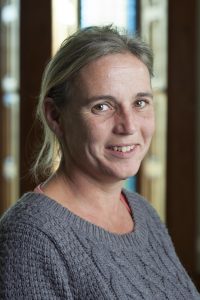
The Solution to South Australia’s blackouts: a market which rewards DER
Helen Poulter, IGov Team, 20th April 2017
On the 28th September 2016 storms in northern South Australia, including tornados with wind speeds in the range of 190-260 km/h caused a state-wide blackout. The update report from the Australian Energy Market Operator (AEMO) and also a recent review by the Chief Scientist, Alan Finkel have recommended that value services for Frequency Controlled Ancillary Service (FCAS) and System Restart Ancillary Services (SRAS) from distributed energy and other storage technologies should be investigated.
In addition, on February 8th 2017, a heatwave with temperatures of 41.6⁰C left 90,000 homes in South Australia without power as AEMO committed to load shedding due to failures of its fossil fuel generators. The demand forecasts they had received had not anticipated the cooling demand for the period and the reduced wind power due to a drop in wind speed. A 165MW gas plant was ‘unavailable’ and unable to start-up in the time requested, needing 4 hours’ notice, leaving homes without power in the evening on one of the hottest days of the summer.
The 28th September 2016 Events in Detail:
- The northern South Australia Storms, including tornados with wind speeds in the range of 190-260 km/h, caused multiple network faults and downed 3 major transmission lines;
- the resulting voltage disturbances caused settings on the wind generators to reduce their output;
- a necessary increase in imports through the Heywood interconnector from Victoria caused a loss of synchronism and led to of the interconnector tripping;
- the FCAS capability of the gas generators – which should have stopped a collapse of system frequency was unable to respond at the required speed AND;
- the SRAS – which also should have stopped a collapse of system frequency – were unable to start due to unexplained failures;
- this led to a collapse of electricity system frequency.
The Energy Economics of South Australia
These two events happened in an Australian State which has 30% of households with rooftop PV and in which installing combined domestic scale solar and storage is cheaper than buying grid electricity. After the 28th September blackout, demand for PV and storage systems spiked and the same can be expected following this latest event.
The new energy economics can be used as a solution to the expected frequency of extreme weather events
These events have highlighted the need for a more reliable and flexible grid; and a market which rewards DER. AEMO has recently appointed Audey Zibelman, ex Commissioner of the NY Public Service Commission in New York State, USA as the new Head of AEMO. Ms Zibelman was the driver of the NYS’s progressive market and network regulation known as the NY Reforming the Energy Vision (NY REV), and one can expect therefore similar ideas as those set out in the NY REV to occur in Australia. Audrey Zibelman has spoken about this recently on ABC radio. In the interview she explained how Hurricane Sandy caused New York to rethink its energy strategy. She also talked of the implementation of a solar-based microgrid in Brooklyn and said she hopes to see such schemes, of which there are a few being trialed within the Australian National Energy Market (NEM) – the market covering the 5 eastern Australian states, soon being an integral part of the new energy system in Australia.
Australia is experiencing particular network issues due to an increase in onsite solar / storage generation but it can also be expected that extreme weather events will increase because of climate change. A new system operation which offers a cost-effective solution to both these challenges can be provided by DER, and we can expect – given the Finkel Report and Audrey Zibelman’s new appointment – that this is where the momentum is within Australian system operation.
Related Posts
« Previous Submission: Building Our Industrial Strategy Green Paper Consultation Paper: Policies, politics and demand side innovations Next »







